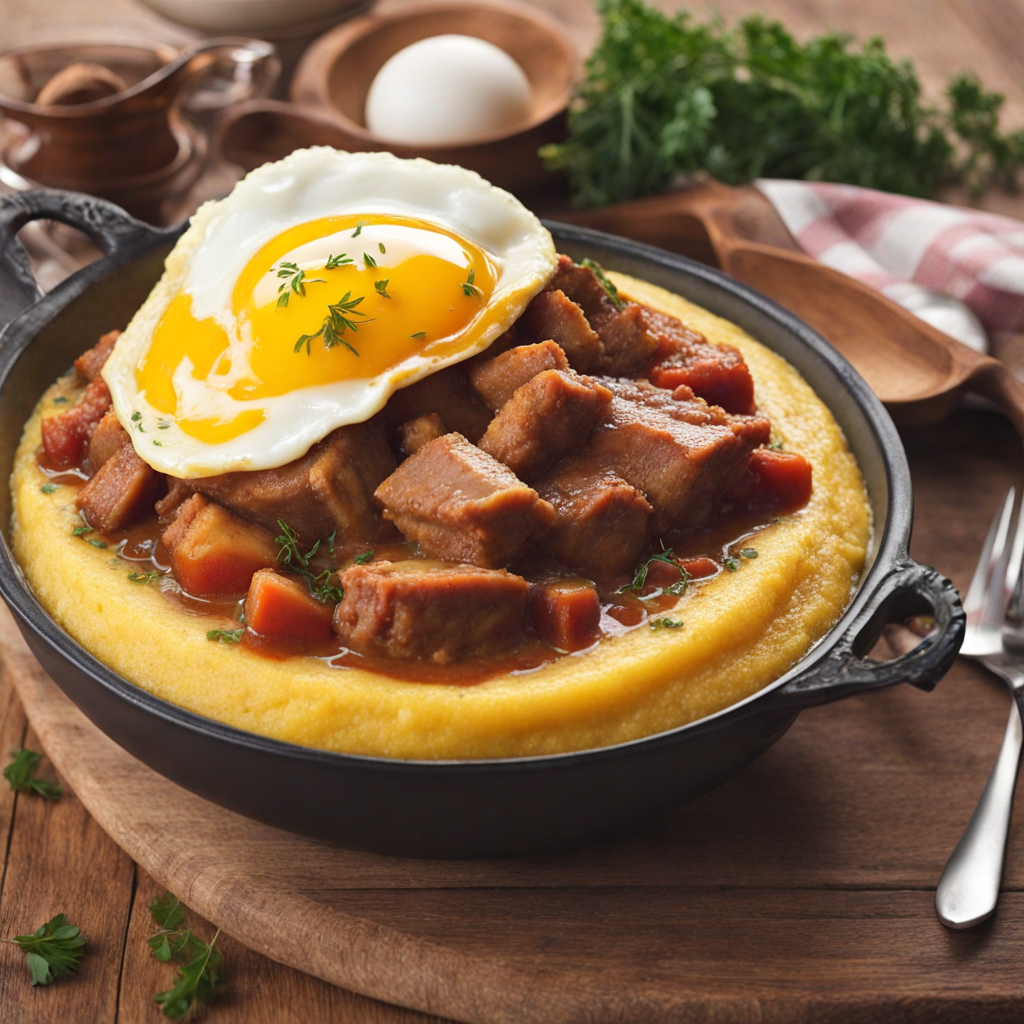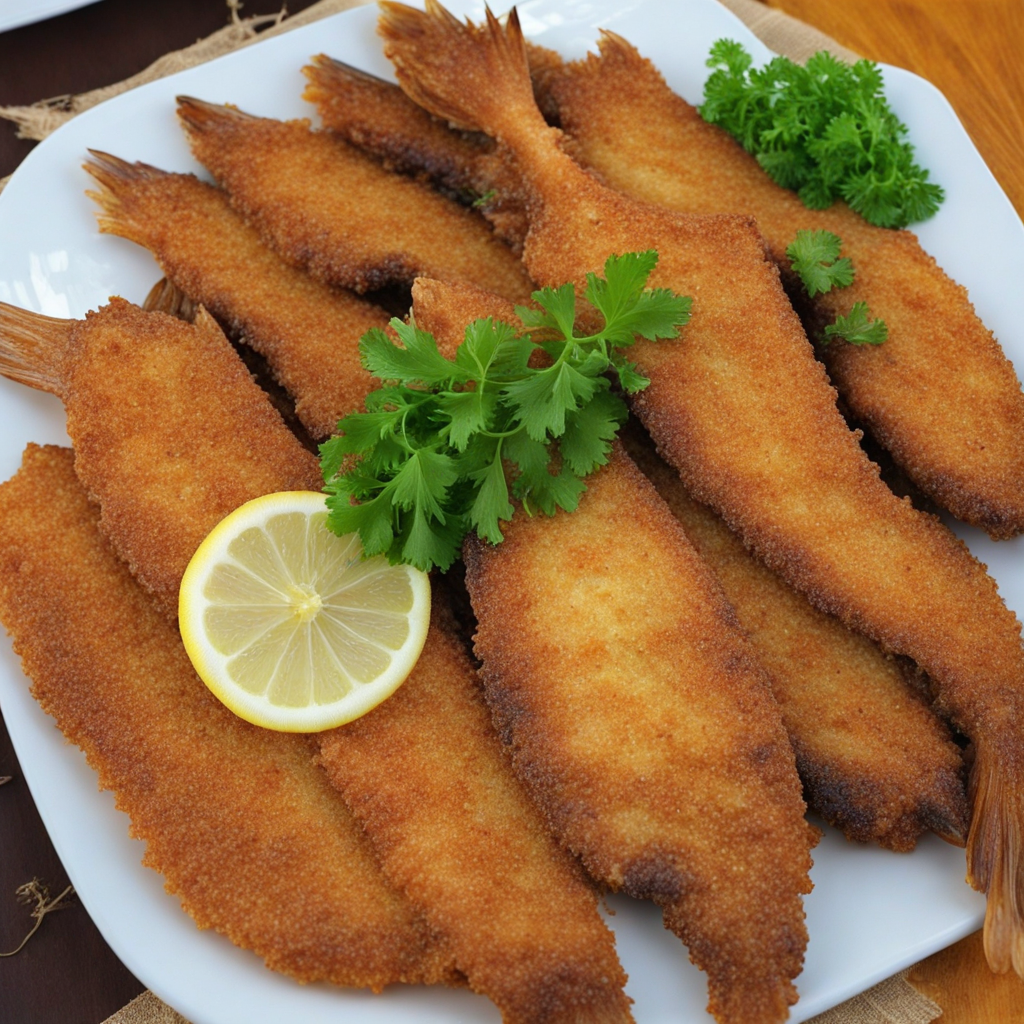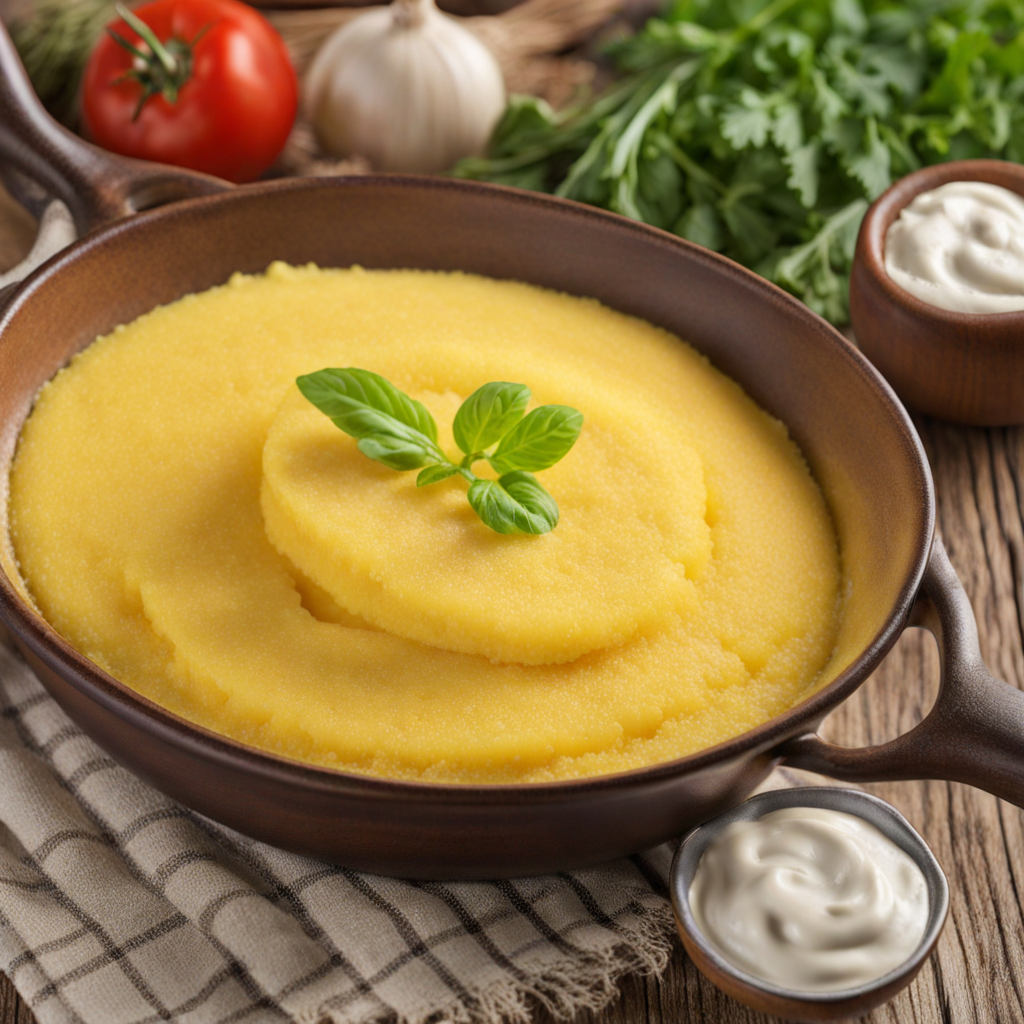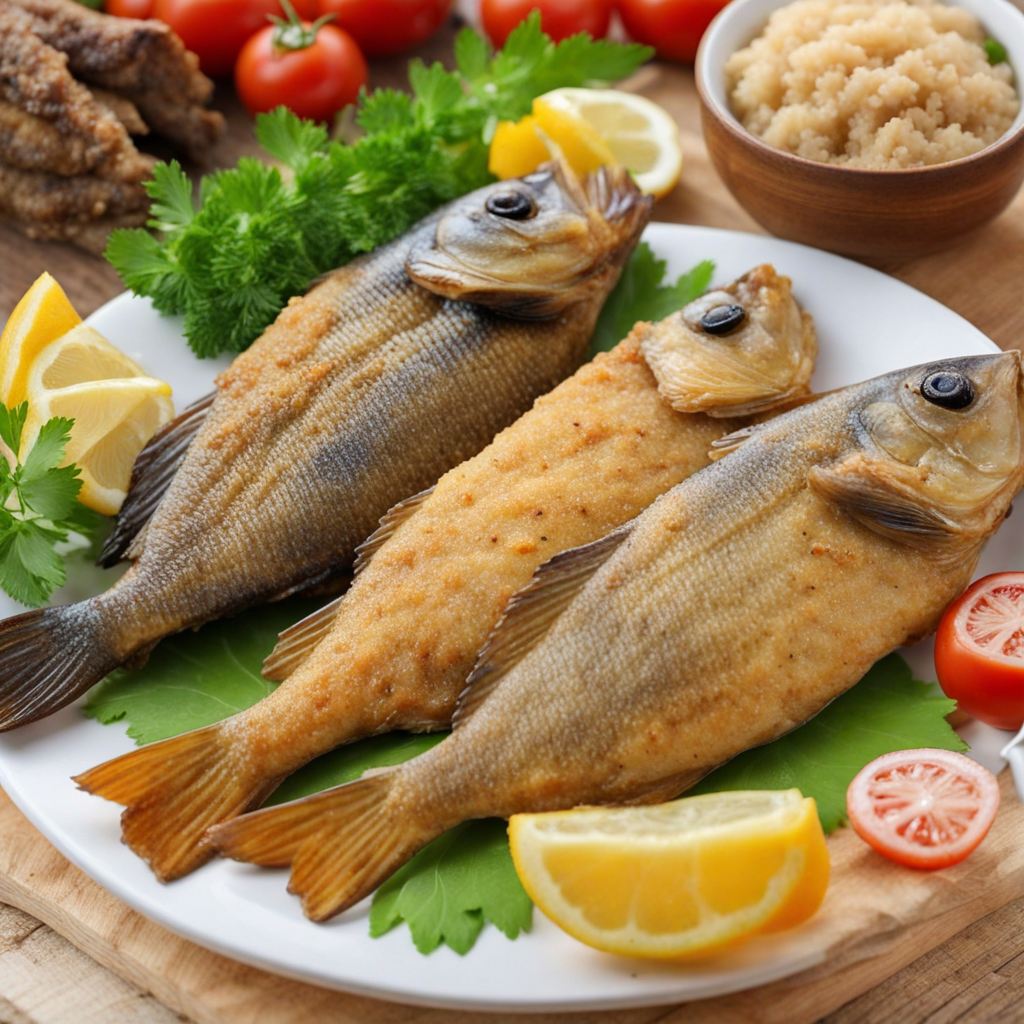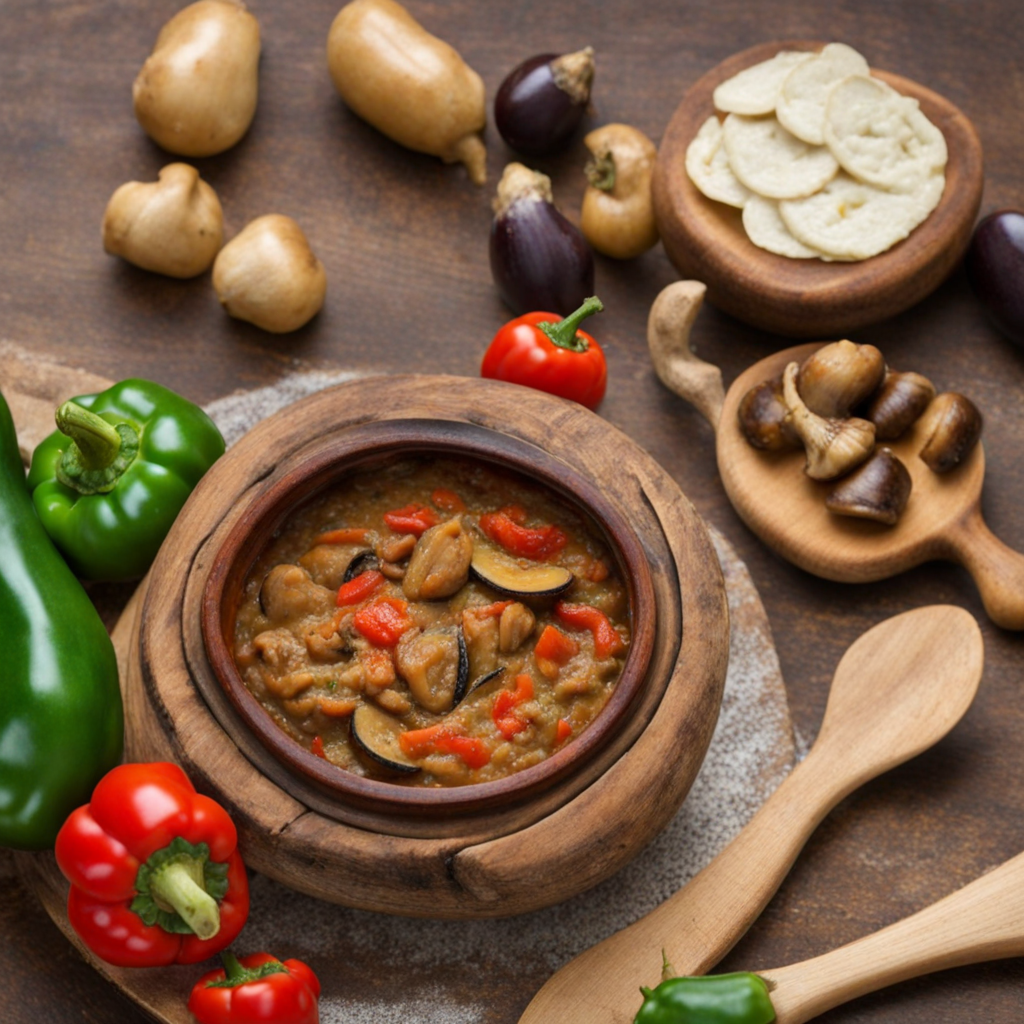Pork Stew with Polenta
Pork Stew with Polenta is a heartwarming dish that embodies the rustic charm of Romanian cuisine. The pork is typically slow-cooked to perfection, allowing it to absorb a medley of flavors from a blend of aromatic vegetables such as onions, bell peppers, and carrots. The meat becomes tender and succulent, while the rich broth thickens into a savory sauce, infused with spices like paprika and bay leaves. This stew not only warms the body but also evokes a sense of nostalgia, reminiscent of family gatherings and traditional Romanian kitchens. Accompanying the stew is polenta, a staple in Romanian households that offers a delightful contrast in texture. Made from cornmeal, polenta is cooked until it reaches a creamy consistency, then allowed to set and sliced into wedges or served spooned directly from the pot. Its mild, slightly sweet flavor complements the robust stew beautifully, providing a comforting base that soaks up the savory juices. The combination of the rich pork stew and the creamy polenta creates a harmonious balance that is both satisfying and delicious. Served together, Pork Stew with Polenta is a dish that invites you to slow down and savor each bite. It's often garnished with fresh herbs, enhancing the aromatic experience of the meal. Whether enjoyed on a chilly evening or at a festive celebration, this dish showcases the warmth of Romanian hospitality and the deep-rooted traditions of its culinary heritage. Each mouthful delivers a taste of comfort, making it a must-try for anyone looking to explore the diverse flavors of Eastern European cuisine.
How It Became This Dish
Tochitură cu Mămăligă: A Culinary Journey Through Romanian History Tochitură cu mămăligă is more than just a dish; it is a celebration of Romanian culture and a testament to the country’s rich culinary heritage. This savory delight, comprising a hearty stew of assorted meats served alongside mămăligă—Romanian cornmeal porridge—embodies the essence of traditional Romanian cuisine. Its origins, cultural significance, and evolution reflect the historical tapestry of Romania, weaving together influences from various regions and peoples. Origins The roots of Tochitură can be traced back to the rural communities of Romania, where the dish was primarily prepared as a hearty meal for farmers and laborers. The term "tochitură" itself is derived from the Romanian word "a toca," meaning "to chop." Historically, it refers to a dish made from a variety of chopped meats, often including pork, beef, and sometimes lamb or chicken, slow-cooked with onions, garlic, and spices. Mămăligă, on the other hand, has even older roots, dating back to the Dacians, the ancient people of the region that is now Romania. Made from cornmeal—an ingredient introduced to the area after the Columbian Exchange—mămăligă became a staple food for many Romanians, especially in the mountainous regions where wheat was less accessible. It served as a versatile accompaniment, complementing a variety of dishes, including Tochitură. Cultural Significance Tochitură cu mămăligă is more than just a meal; it is a cultural symbol representing the heart and soul of Romanian hospitality. Traditionally, this dish was often served during family gatherings, celebrations, and communal feasts, embodying the spirit of sharing and togetherness that is deeply embedded in Romanian culture. It is a dish that brings people together, inviting them to savor not just the flavors but also the stories and memories associated with it. In rural communities, Tochitură was often prepared during the colder months when hearty meals were necessary to sustain energy for laborious tasks. The dish's rich, robust flavors are designed to warm the body and soul, providing comfort during harsh winters. It is also a dish that showcases the resourcefulness of Romanian cooks, who would use whatever meats were available, often from their own livestock. This practice of using local ingredients not only reflects a sustainable approach to cooking but also ties the dish to the land and the traditions of the people. Development Over Time As Romania evolved through various historical phases—from the Dacian kingdom through the Roman conquest, the Middle Ages, and into modern times—the preparation and presentation of Tochitură cu mămăligă transformed as well. In the early days, the dish was quite simple, mainly consisting of whatever meats were available, cooked with basic seasonings. However, as trade routes opened and cultural exchanges occurred, the flavors and techniques used in Tochitură began to diversify. During the Ottoman Empire's influence in the Balkans, new spices and cooking methods were introduced, enriching the flavor profile of traditional Romanian dishes. Ingredients such as paprika and cumin found their way into Tochitură, contributing to its bold taste. The addition of smoked meats became popular, particularly in regions like Transylvania, where curing and smoking meats were common preservation methods. In the 19th century, as Romania underwent a national awakening, there was a growing interest in traditional cuisine as a way to assert national identity. This period saw the codification of many classic Romanian dishes, including Tochitură cu mămăligă. Cookbooks began to emerge, documenting regional specialties and elevating traditional meals to the status of cultural heritage. The dish became synonymous with Romanian identity, often featured in literature, art, and folklore. In urban areas, Tochitură evolved further, adapting to the tastes and preferences of a changing populace. While rural recipes emphasized rustic simplicity, urban interpretations began to include more elaborate presentations and gourmet variations. Today, Tochitură can be found in both humble village homes and upscale restaurants, showcasing its versatility and enduring popularity. Contemporary Variations In contemporary Romania, Tochitură cu mămăligă continues to thrive, often served with a variety of accompaniments. A common addition is a fried egg on top, adding richness and depth to the dish. Some regions even incorporate cheese, such as telemea—a salty, feta-like cheese—sprinkled on top of the mămăligă. With the rise of the farm-to-table movement and a renewed interest in traditional cooking methods, many chefs are returning to the original rustic recipes. They emphasize locally sourced ingredients, often from their own farms or nearby producers, which not only enhances the freshness and flavor of the dish but also supports local economies. Conclusion Tochitură cu mămăligă is a dish that carries the weight of history and the warmth of community. It is a culinary emblem of Romania, rooted in the agricultural practices of its people and shaped by centuries of cultural exchange. As it continues to evolve, Tochitură remains a beloved staple that encapsulates the spirit of Romanian hospitality, tradition, and resilience. Whether enjoyed in a family home during a festive gathering or presented with a modern twist in a fine dining setting, Tochitură cu mămăligă is a dish that not only nourishes the body but also feeds the soul, inviting people to gather, share stories, and celebrate the rich tapestry of Romanian culture. In every bite, one can taste the history, the love, and the enduring spirit of a nation that has embraced its culinary heritage while continuously innovating and adapting.
You may like
Discover local flavors from Romania



